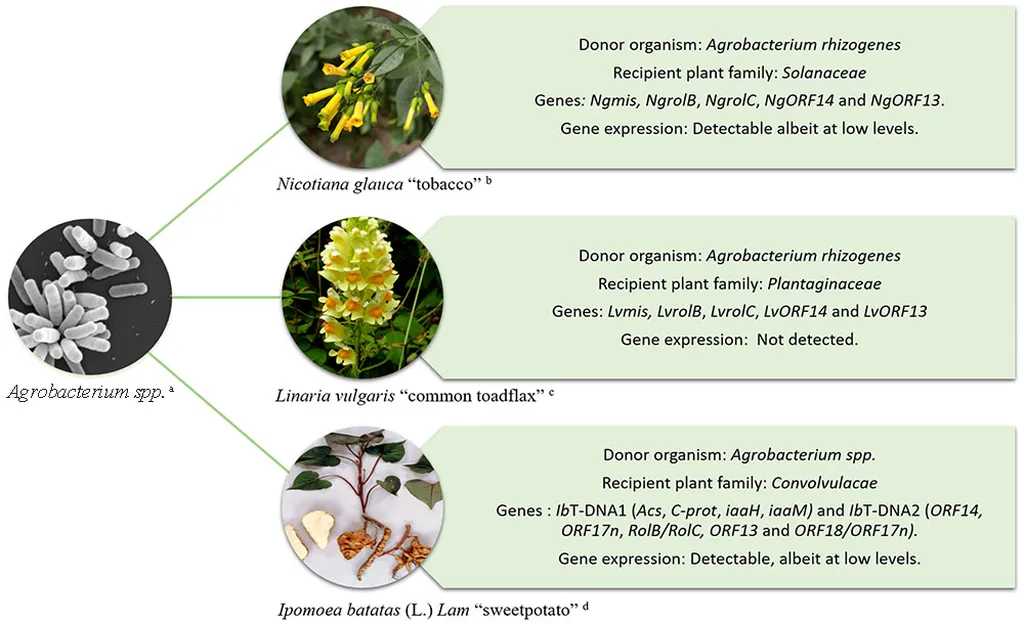In the vast and intricate world of plant biology, a silent yet powerful force has been at work, shaping the evolution of plants and their interactions with other organisms. This force, known as horizontal gene transfer (HGT), has long been recognized as a key driver in the evolution of prokaryotes, but its role in the evolution of eukaryotes, including plants, has remained largely unexplored. A recent review published in *Plant-Environment Interactions* sheds light on this phenomenon, highlighting its profound implications for plant evolution, adaptation, and biotechnology.
Horizontal gene transfer, a process where genetic material is transferred between organisms in a manner other than traditional vertical inheritance, has been found to play a significant role in the evolution of plants. This process can lead to the emergence of novel features, enabling plants to exploit new environments and resources with reduced competition. “HGT is not just a footnote in the story of plant evolution; it’s a chapter that we’re only just beginning to read,” says lead author Rojana Binte Azad from the Institute of Biotechnology and Genetic Engineering at Gazipur Agricultural University in Bangladesh.
The review discusses recent discoveries of HGT events among eukaryotic species, such as gene transfers from fungi to plants and from plants to whiteflies. These findings underscore the importance of understanding HGT in the context of plant biology and its potential applications in plant biotechnology.
One of the most exciting aspects of this research is its potential to revolutionize the field of bioengineering. By harnessing the power of HGT, scientists may be able to develop climate-smart crops that are better equipped to withstand the challenges posed by climate change. This could have significant commercial impacts for the agriculture sector, as farmers would have access to more resilient and productive crops.
Moreover, understanding the mechanisms underlying HGT could open up new avenues for pest and disease management. For instance, genes conferring resistance to pests or diseases could potentially be transferred to crops, enhancing their resilience and reducing the need for chemical interventions.
However, the review also highlights the knowledge gaps that still exist in our understanding of HGT in plants. Further research is needed to fully elucidate the mechanisms of HGT and its implications for plant evolution and adaptation. “We’re standing on the brink of a new era in plant biotechnology, but we need to fill in the gaps in our knowledge to fully realize its potential,” Azad notes.
As we delve deeper into the world of HGT, we may uncover new ways to harness its power for the benefit of agriculture and the environment. This research not only reshapes our understanding of plant evolution but also paves the way for innovative solutions to some of the most pressing challenges facing the agriculture sector today. The future of plant biotechnology is bright, and HGT is poised to play a pivotal role in shaping its landscape.

